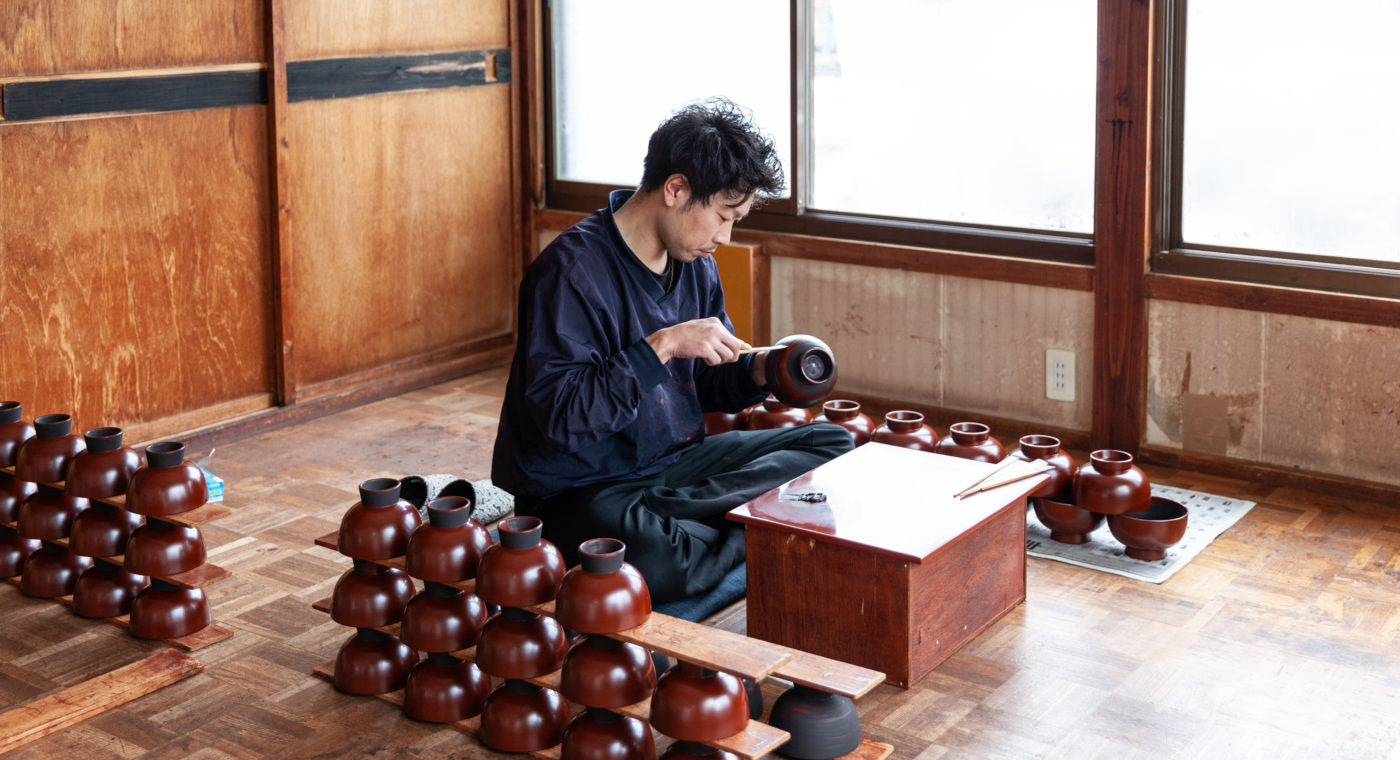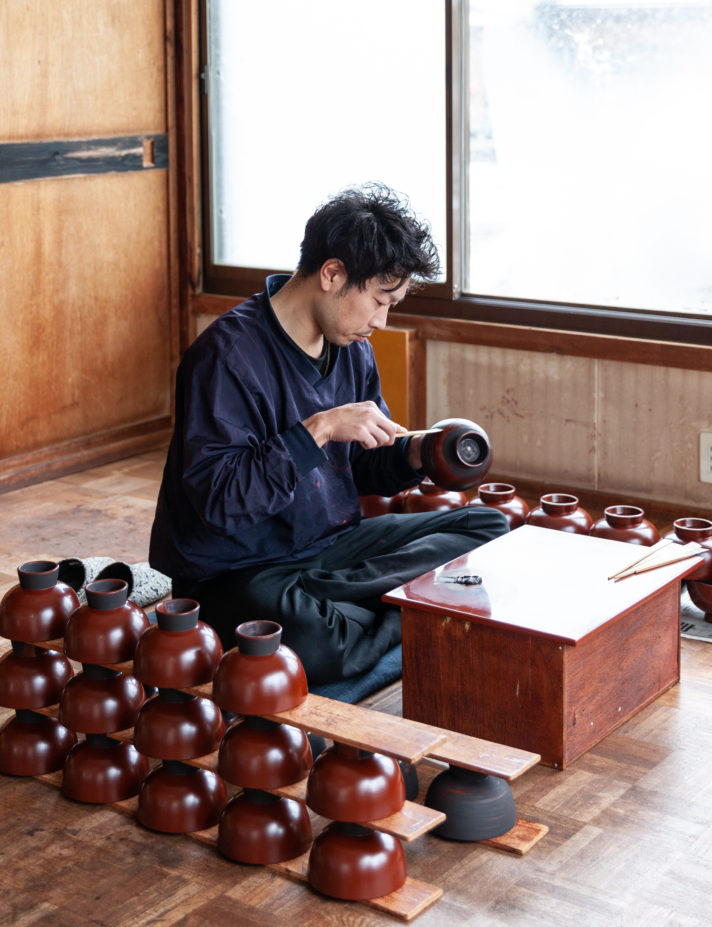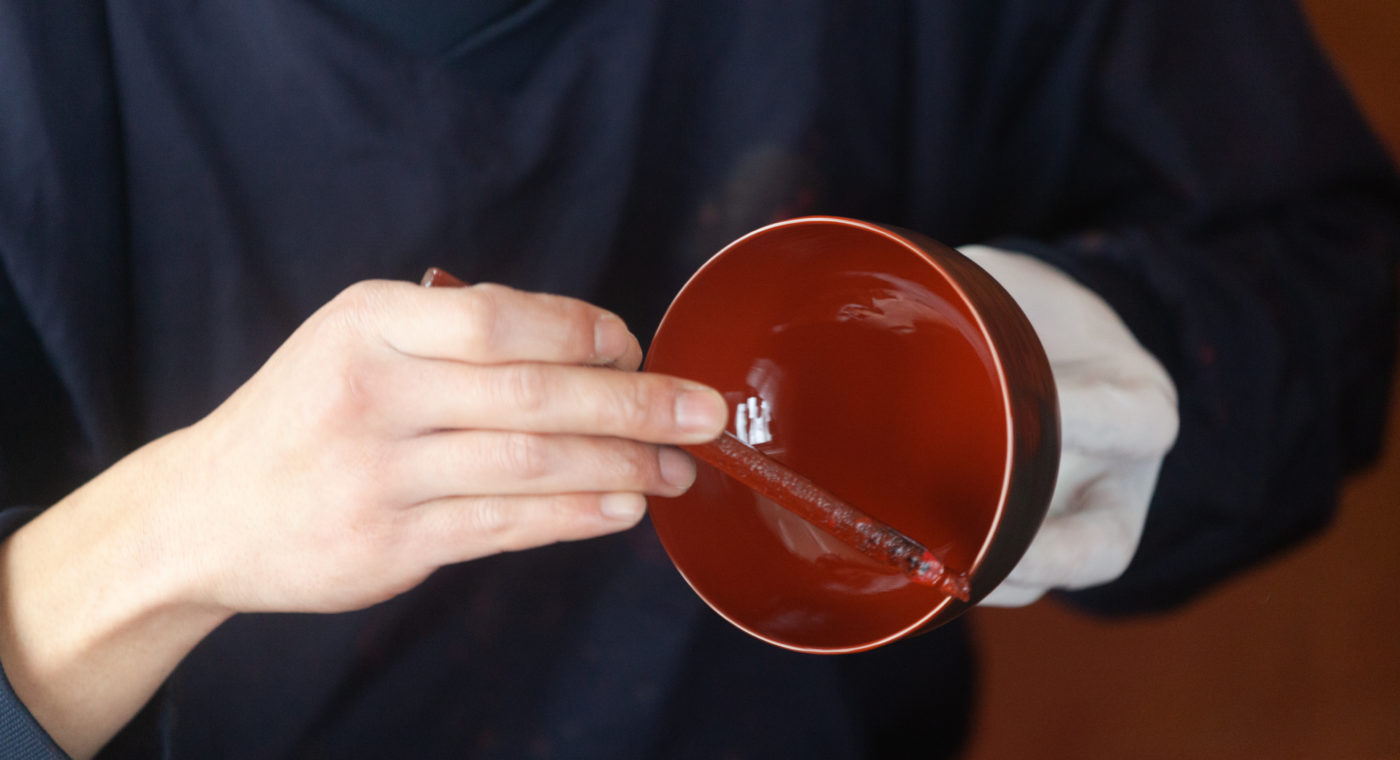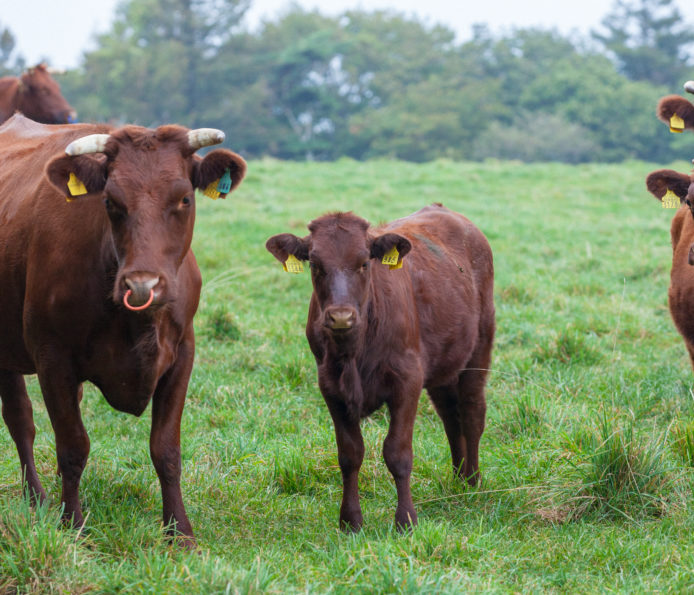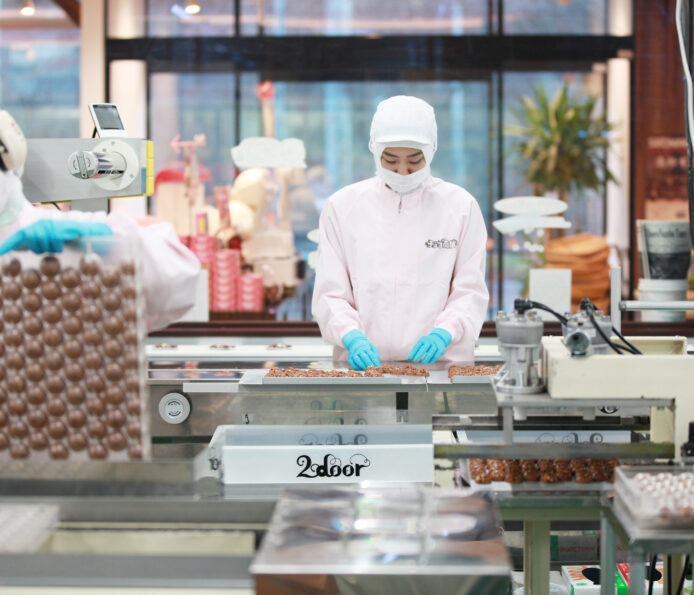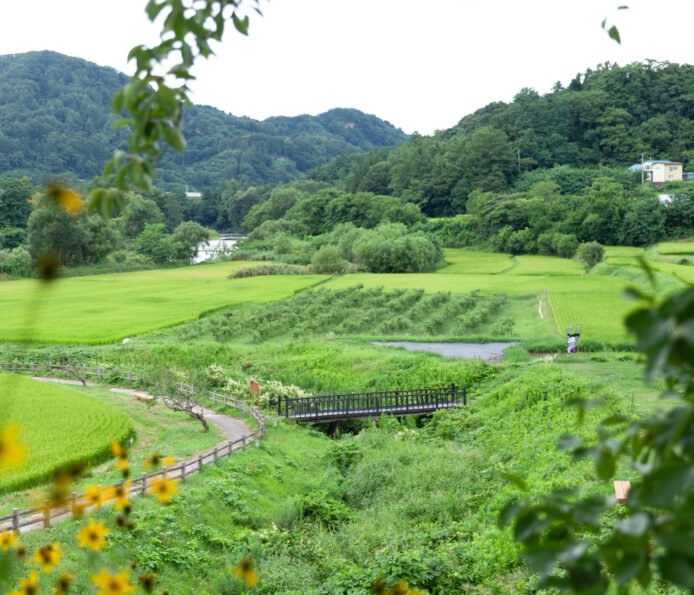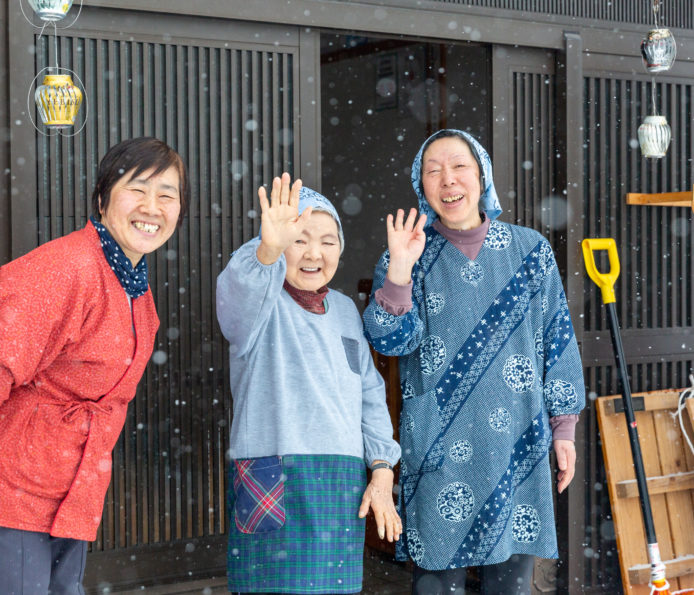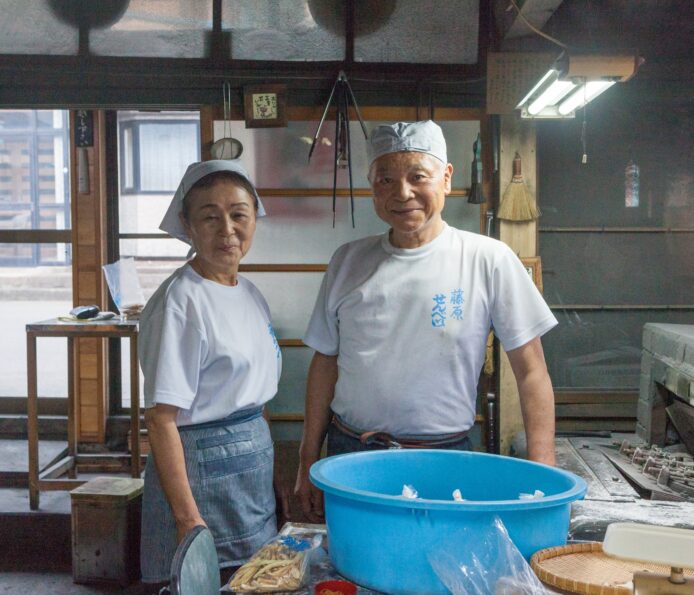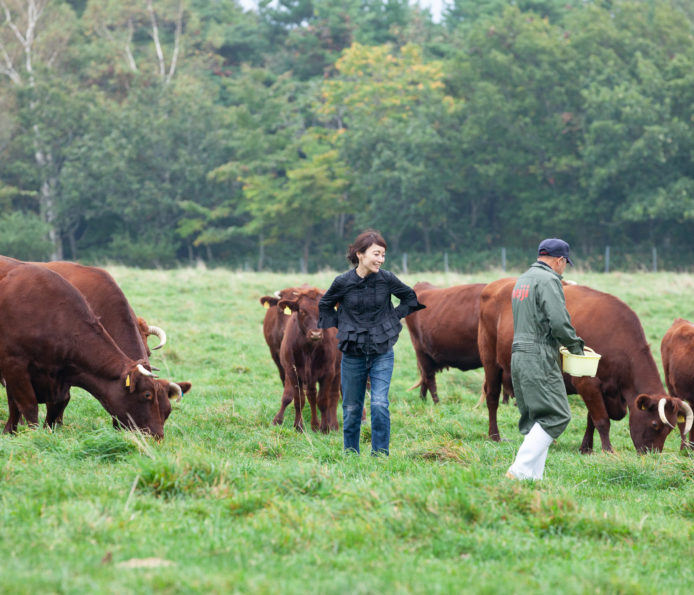The daily tableware that is completed by the user
The beautiful appearance of Joboji Urushi (lacquer) paint holds simplicity focused on utility as well as elegance. Its surface is matte and has no decoration, nor polished gloss or elaborate patterns. The history of Joboji Urushi paint began with the monks at Tendaiji which was established in Joboji-machi (Joboji town) during the Nara period. The monks made lacquerware to use for their daily meals. It makes sense, as it is said that the lacquerware was sold in the precinct or along the path to the temple, and eventually the local people began using it in their daily lives as well.
Despite the fact of lacquerware being one of Japan’s most representative crafts, 97% of the lacquer used in the domestic market is imported from abroad. With Chinese lacquer being dominant in the market, domestic lacquer has only 3% of its share. 70% of the 3% of domestic lacquer is produced in Joboji-machi in Ninohe.
Not only is it the leading producer of domestic lacquer in quantity but Joboji Urushi is also highly regarded for its quality. It has been used to repair many of Japan’s valuable historical sites such as Nikko Toshogu Shrine, which is designated as a National Treasure, and Kinkaku-ji, which is a World Heritage Site.
Lacquer Painter Takumi Iwadate discusses his work:
“I am most proud of the fact that we are able to create lacquerware, using abundant quantities of fine quality lacquer. Application of many layers of lacquer adds durability, and we can see the lacquer’s original color and texture. Joboji Urushi paint is for daily use and the users are the ones who polish it. The user can complete the paint by using it in daily life and add shine. What’s interesting is that we can’t get the perfect shine by quickly trying to polish it. We use it, wash it, and wipe it. We just need to repeat the process and after a year or so, the appearance will be quite different.”
Takumi Iwadate’s grandfather was an urushi tapper and his father was also a lacquer painter. His family was in charge of urushi production from generation to generation. He says he grew up seeing his grandfather and father’s works since he was young, and he had helped paint lacquer to earn pocket money. His first step into the world of urushi was the process of applying lacquer to a plain white wood surface that had just arrived from the Kijiya (wood workers). He learned all the necessary work from his father.
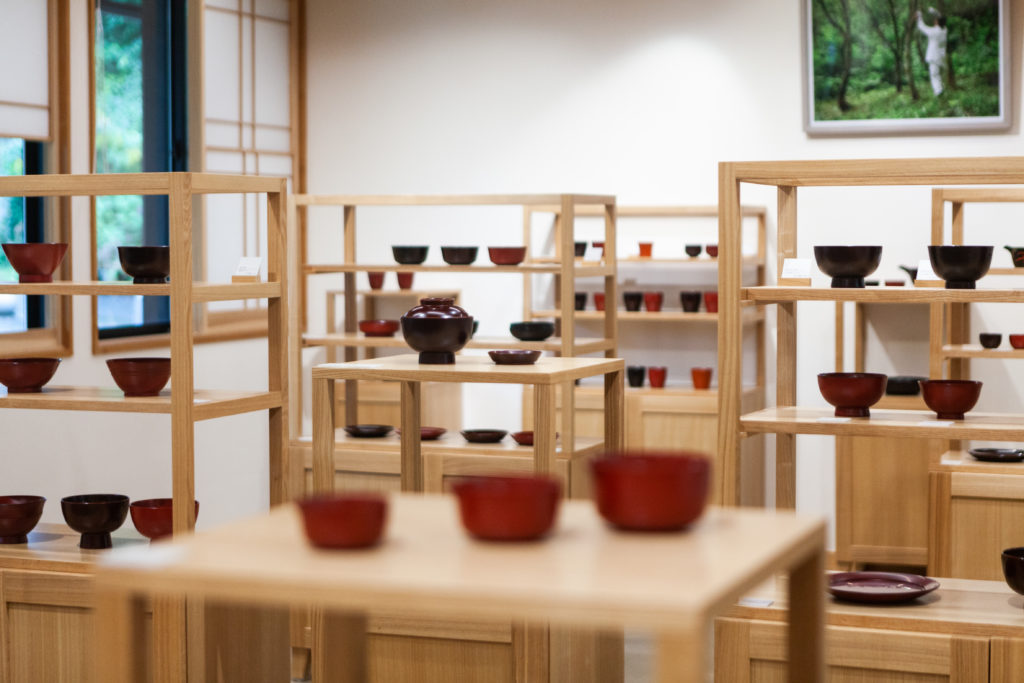
He applies lacquer to the wooden base and polishes it. After applying it to the front, he waits for a day and does the backside. Then, he waits another 2 days and polishes the surface. This process that takes at least 5 days is repeated 7 to 8 times from the base coating to the final application. He keeps on applying lacquer until the work of the day finishes, working 8 hours a day. The finished products are sold at Tekiseisha, a place in the same area that displays and sells Joboji Urushi paint products and other lacquerware, as well as at various department stores.
Lacquerware adds its beauty and charm as it is used over a long time. “I sometimes take repair orders for the lacquerware my father made when he was just a beginner craftsman 40 years ago,” explains Mr. Iwadate. Once a product is brought to be repaired, all of the lacquer is taken off to expose the wooden surface and new lacquer is applied from scratch. It is then slowly polished through use in daily life.
When we ask his favorite shape, he replies he likes “katakuchi.” It is a type of vessel with a spout on the edge of a side.
“We hold the spout part to scoop doburoku sake and pour it into a glass. It’s a good design. I am trying to create my original design as the next generation while I take over my father’s style. I have an idea of making thinner ones since many of our products have solid, bulky designs. I’m also thinking that it’s necessary to create a design where the wood is exposed since non-Japanese travelers who have less knowledge on Urushi paint often ask if lacquer is applied to plastic. I’d like to try something new as a challenge to the things I have experienced in these kinds of situations.”
Mr. Iwadate explains how he would be happy if visitors meet the local people, find seasonal blessings and local food culture, and enjoy sake with the Joboji Urushi paint.
“You will find Joboji Urushi paint in ryokans, restaurants, and within the local people’s lives during your trip. I would like you to use lacquerware with Joboji Urushi paint and experience the difference of the feel in your hands and the touch of your mouth from a glass, even just by drinking water. I would be happy if you incorporated anything with Joboshi Urushi paint to use as a part of your daily life after feeling this difference.”



